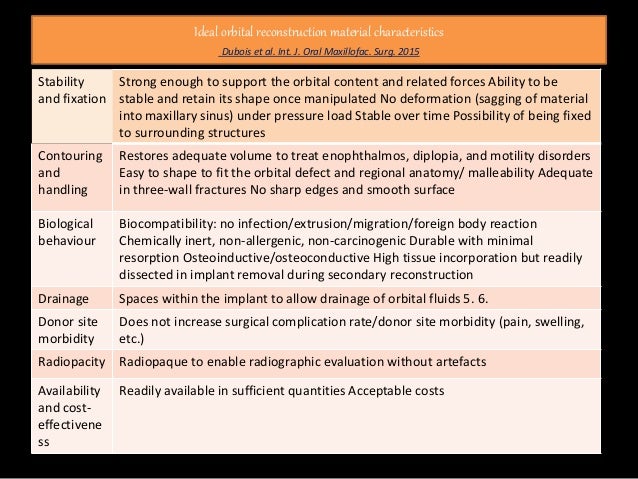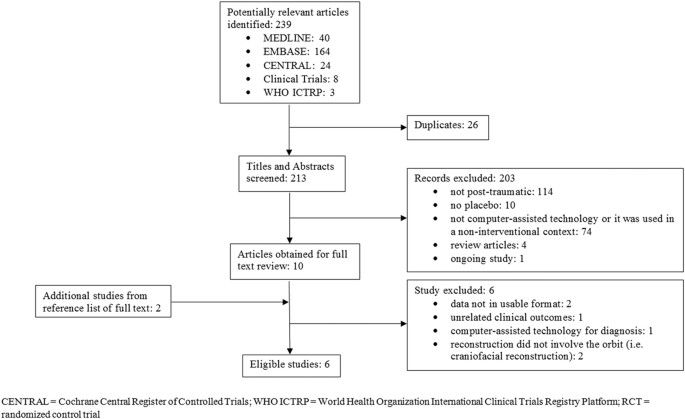Orbital Floor Reconstruction Materials

Reconstruction of orbital floor by titanium mesh 16.
Orbital floor reconstruction materials. Fixation of orbital reconstruction material varies with the type and nature of the fracture. So far evidence is missing. Alternatively matrix midface screws can be used. Concerning the materials that are used to reconstruct the fractured orbital floor the trend is leaving autogenous bone grafts to well tolerate alloplastic materials emerged in the past few years.
Orbital fracture is common in facial trauma. Its incidence ranges from 18 to 50 of all craniomaxillofacial traumas considering the difference of the geographic region injury mechanism and study population. The forces on the incorporated materials were approximately 0 003 n and 0 03 n for the pds foil and collagen membrane respectively. A systematic literature review was performed from which 48 studies were selected after primary and secondary screening based on set inclusion and exclusion criteria.
Fixation of most materials in the orbital floor is achieved by the use of one or more screws. The reconstruction of total maxillectomy defects requires the reconstruction of the orbital floor and soft tissue coverage. Harvested conchal cartilage graft that can be used to reconstruct small internal orbital defects. The diameter depends on anatomical requirements but will normally vary between 1 0 1 3 or 1 5 mm.
Although the eye is well protected by the strong orbital rim the thin orbital floor and the medial wall that acts as a shock absorber there is a high chance of. A b silastic sheeting reinforced. But even in the field of reconstruction materials there is no reliable consensus which material is the best to use. Medpor titanium reinforced orbital implant.
The purpose of this study was to assess and analyze published evidence supporting various materials used for orbital floor reconstruction and to develop a decision making algorithm for clinical application. Fixation of most materials in the orbital floor is achieved by the use of one or more screws. Many reconstruction materials for orbital floor fractures have been described in the past including autologous bone transplants resorbable polymers and titan meshes. Reconstruction of orbital floor using prolene mesh 17.
Nonvascularized bone grafts to the orbital floor in combination with temporalis or free rectus abdominus flap reconstruction results in the more consistent preservation of functional vision and a low incidence of. The orbital floor defect sizes were 208 3 sd 33 4 mm 2 for the globe impacts and 221 8 sd 53 1 mm 2 for the infraorbital impacts. Fixation of orbital reconstruction material varies with the type and nature of the fracture. The diameter depends on anatomical requirements but will normally vary between 1 0 1 3 or 1 5 mm.

















